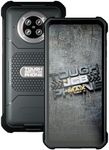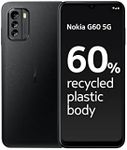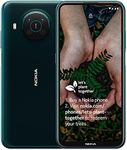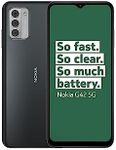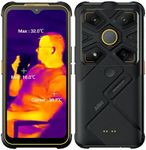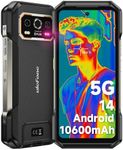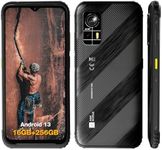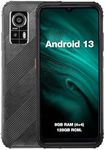Buying Guide for the Best Tough Phones
When choosing a tough phone, it's important to focus on durability and functionality. Tough phones are designed to withstand harsh environments and rough handling, making them ideal for outdoor enthusiasts, construction workers, or anyone who needs a reliable device in challenging conditions. Consider what environments you'll be using the phone in and what features are most important to you, such as battery life, camera quality, or connectivity options. By understanding the key specifications, you can select a tough phone that best suits your needs.Durability RatingDurability ratings, such as IP (Ingress Protection) and MIL-STD (Military Standard), indicate how well a phone can withstand dust, water, and shock. An IP68 rating means the phone is dust-tight and can be submerged in water, while MIL-STD-810G indicates it can handle drops, extreme temperatures, and vibrations. If you work in a dusty or wet environment, or if you frequently drop your phone, look for higher ratings to ensure the phone can handle these conditions.
Battery LifeBattery life is crucial for tough phones, especially if you spend long periods away from power sources. Battery capacity is measured in milliampere-hours (mAh), with higher numbers indicating longer battery life. If you need a phone that lasts all day or longer, look for a model with a battery capacity of at least 4000mAh. Consider your usage patterns; if you use GPS or other power-intensive apps frequently, opt for a phone with a larger battery.
DisplayThe display of a tough phone should be both durable and functional. Look for screens made from Gorilla Glass or similar materials that resist scratches and impacts. Screen size and resolution are also important; larger screens are easier to read and use, but may be more prone to damage. If you need a phone for navigation or reading documents, a larger, high-resolution screen may be beneficial. However, if portability and durability are your main concerns, a smaller screen might be more suitable.
Camera QualityCamera quality in tough phones can vary, but it's important if you need to document work or capture moments in challenging environments. Look at the megapixel count and features like optical image stabilization or night mode. Higher megapixels generally mean better image quality, but also consider the camera's performance in low light. If photography is a priority, choose a phone with a good camera system, but if it's less important, you might prioritize other features.
ConnectivityConnectivity options such as 4G/5G, Wi-Fi, and Bluetooth are essential for staying connected in remote or challenging environments. Ensure the phone supports the network bands used in your area and consider whether you need advanced features like NFC for contactless payments. If you often work in areas with poor reception, a phone with better antenna performance or support for more network bands might be necessary.
Operating SystemThe operating system (OS) affects the phone's usability and app compatibility. Most tough phones run on Android, which offers a wide range of apps and customization options. Consider the OS version and whether the phone receives regular updates, as this impacts security and performance. If you rely on specific apps or need a user-friendly interface, ensure the OS meets your requirements.


